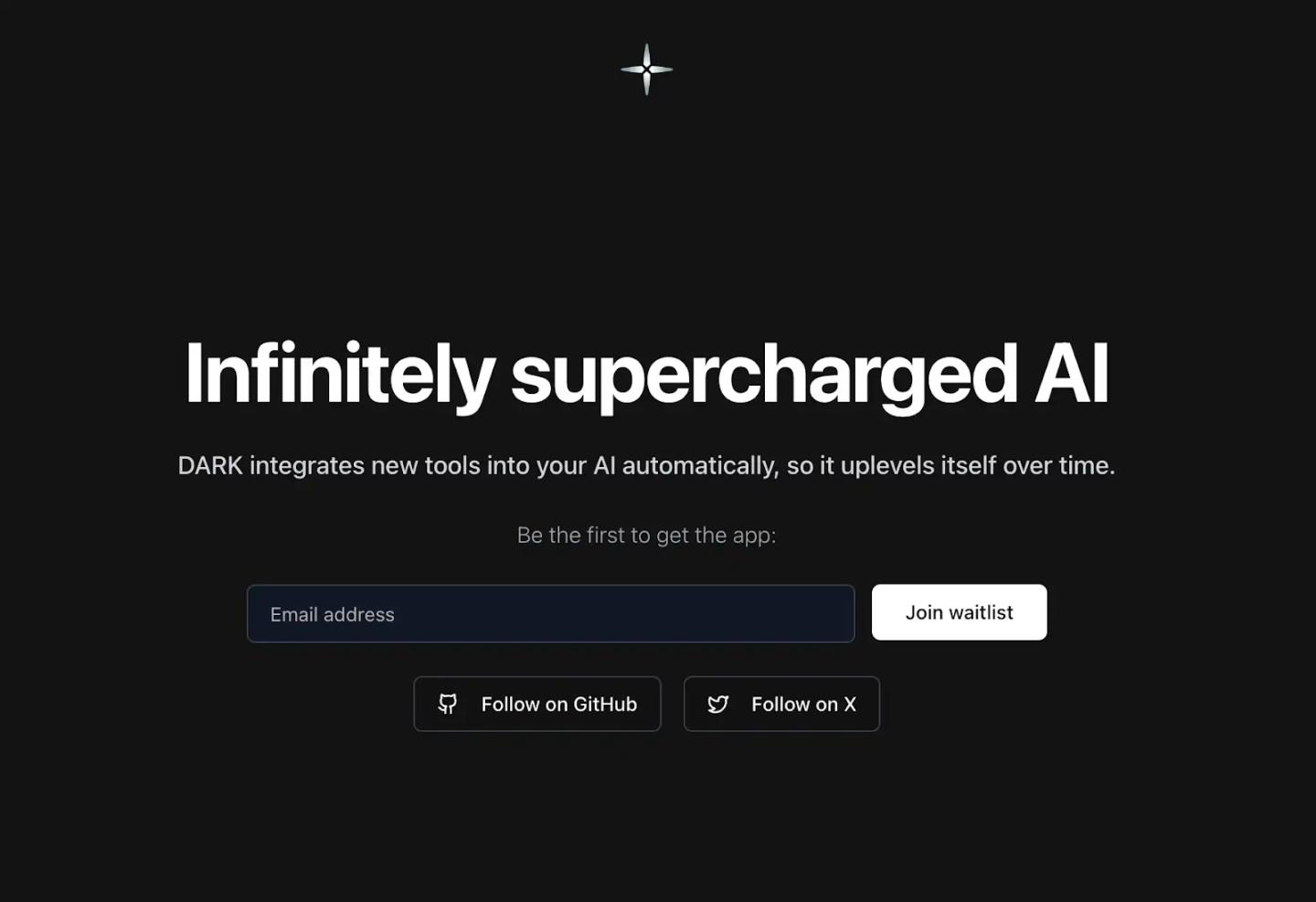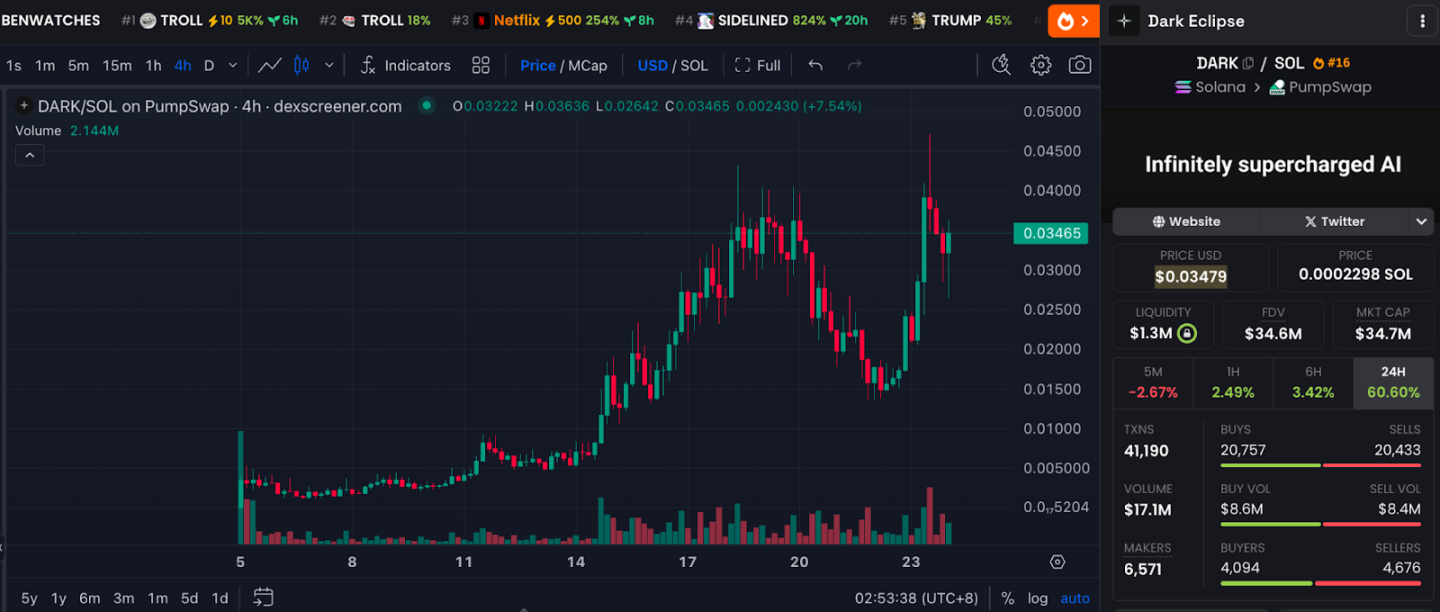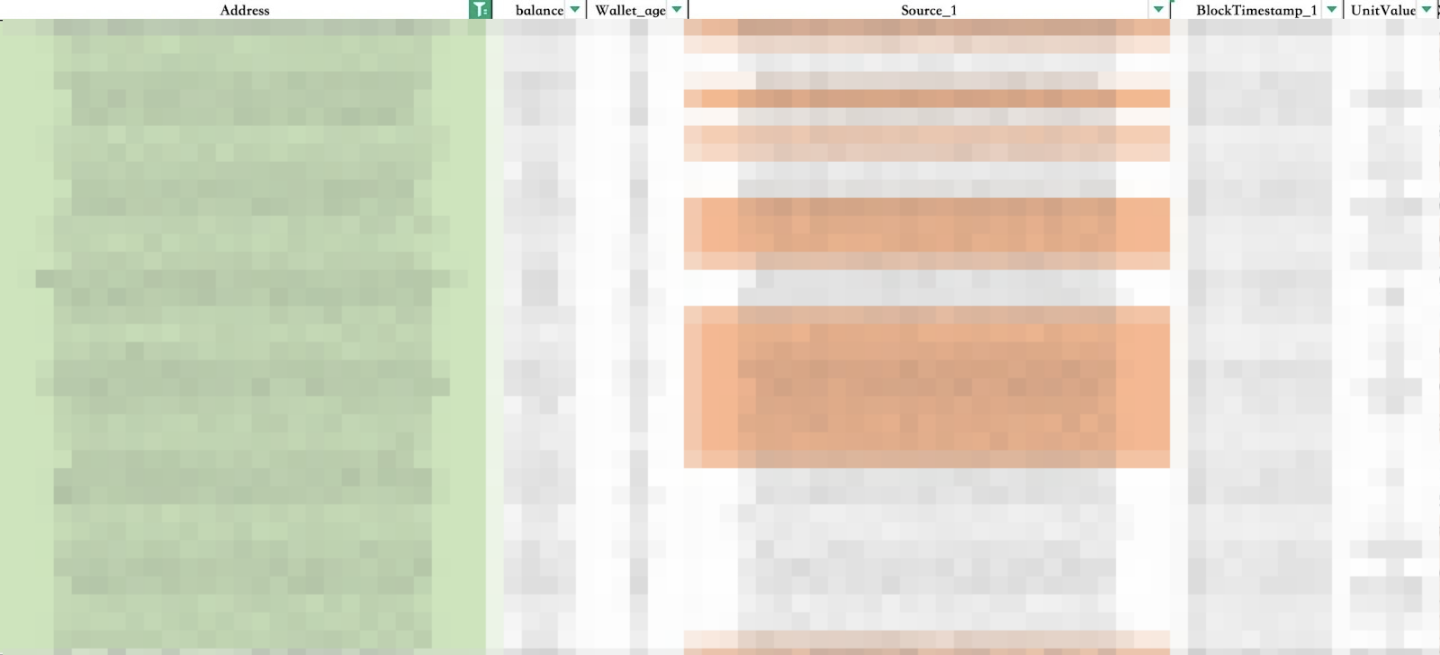DARK: From AI Meme hits to chip control puzzles

Reprinted from panewslab
04/25/2025·14DIf you are paying attention to the crypto market recently, you may have noticed the amazing performance of $DARK: the market has recovered in full swing against the backdrop of the new SEC president of the United States. As the AI Meme project of the Solana ecosystem, $DARK has become the leader in this round of upward trend.
The market value of this token has been rising from the initial $2 million, and has recently exceeded $47 million, setting a new record high.
The popularity of $DARK is no accident. As an AI project that provides multi-party computing (MCP) capabilities based on the TEE protocol, its founder @edgarpavlovsky has created his own "salute version" because of his love for the full-chain game Dark Forest. The project quickly gained market recognition for its efficient product delivery capabilities and became a celebrity token in the Solana community for a time.

However, behind these glamorous narratives, the on-chain data reveals another picture: $DARK's chip distribution shows obvious characteristics of controlling chips. So we can’t help asking: Is this a community-driven success, or is it a carefully designed controlled by a few people?

On-chain analysis: Who is in control of $DARK?
We conducted a comprehensive analysis of the top 500 holders of $DARK (excluding the exchange address), and the results show:
22.22% of the token supply is concentrated in the hands of 3 clusters;
These addresses have close connections such as mutual transfer of funds and shared sources of funds, forming a hidden control network.
The following are the specific analysis results:
Green Cluster: The Real Controller of the Market
Number of addresses: 136
Cost control ratio: 19.74%
On-chain features:
- Frequent mutual transfer of funds between addresses;
- Some addresses share the same source of funds and where the funds go;
- 27 addresses jointly hold $BC, and 20 addresses jointly hold $RFC.
Green clusters are the core control force of $DARK, and their behavior patterns show a high degree of organization.

Yellow Cluster: A Secret Small-scale Controller
Number of addresses: 3
Control ratio: 1.25%
On-chain features:
- There is a behavior of mutual transfer between addresses;
- The destination of funds is highly consistent, but no common token holding characteristics were found.
Although the size of the yellow cluster is small, it shows extremely high synergy and may play a supporting role in market activities.

Blue Cluster: Low-key "Shadow Player"
Number of addresses: 3
Control ratio: 1.23%
On-chain features:
- There is mutual transfer between addresses;
- No other token holding characteristics were found.
The on-chain behavior of the blue cluster is relatively secretive, which may be to diversify risks or hide capital flows.

Scattered stories, centralized truths
The narrative of $DARK is decentralized and community-driven, but on-chain data exposes the highly centralized distribution of token distribution: just 3 clusters control over 22% of the token supply. The risks behind this cannot be ignored:
Pricing rights are concentrated in the hands of a few
Pulling the market: controlling the raising cluster can create the illusion of price increase through collective purchases and attract retail investors FOMO;
Smash: When the price is high, the cluster sells in a concentrated manner, causing the market to plummet.
Liquidity control
Controlling the raising cluster can further manipulate the market depth and create the illusion of price fluctuations by limiting token liquidity.
The illusion of decentralization
Although $DARK's narrative is "community-driven", the actual control is concentrated in a few addresses, and ordinary investors actually lack the right to speak for price.
Conclusion: Is DARK a miracle or a script?
From product to narrative, $DARK seems to be a successful experiment in the Solana ecosystem. But the data on the chain reveals the hidden truth:
- Nearly 20% of the token supply is concentrated in green clusters, and their behavior patterns are highly consistent;
- 22.22% of tokens are controlled by 3 clusters, and the control characteristics are significant;
The so-called decentralized narrative may just be a carefully packaged story.
When investing in projects like $DARK, investors need to ask themselves a question: Are you paying for the success of your community, or are you icing on the cake for the wealth of a few?



 chaincatcher
chaincatcher